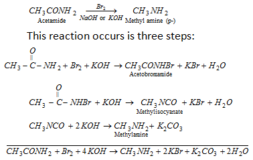Alkaline earth metals

source : gallery hip.com
Position of alkaline earth metal in the periodic table:
Beryllium (Be), Magnesium (Mg), Calcium (Ca), Strontium (Sr), Barium (Ba), Radium (Ra) are persent in IIA or II group of periodic table. These are s-block elements. These are called alkaline earth metal because their oxides (Mgo, Cao) are alkaline (basic in nature) and infusible like silica. Ra is radio active element.
General characteristics:
A)Electronic configuration:

Their configuration of outer most shell is ns2
B) Valency-Their valency is 2 and oxidation number is +2
C) Atomic and ionic radius– Atomic and ionic radius of alkaline earth metal are smaller than alkali metals. On moving down the group atomic and ionic radius increases because number of shells increases. Radius of cation is always smaller than its neutral atom.
ca++(calcium ion) < ca (calcium atom)
D) Ionisation Potential– Ionisation potential decreases on moving down the group because atomic size increase.
I.P = 1/atomic size
E) Electro positive character– It increases on moving down the group because tendency to lose electron increases.
F) Solubility in Mercury (Hg)– Alkaline earth metal are soluble in mercury and form amalgam. Alloys of mercury are called amalgam.
example: Ca-Hg (calcium amalgam)
G) Reactivity– These are highly reactive metals due to low reduction potential value and low ionisation potential
H) Reducing power- These metals are highly reducing in nature but alkali metals are highly reducing agents than alkaline earth metals.
I) Occurence- These are reactive metals, therefore they do not occur in free state in the nature.
What happens when:
a) Calcium carbonate when heated:
CaCO3 —–> CaO + CO2
b) Magnesium carbonate is heated:
MgCO3 ——> MgO + CO2
c) Calcium bicarbonate when heated:
Ca (HCO3)2 ——->CaCO3 + H2O + CO2
CaCO3 ——-> CaO + CO2
d) Calcium nitrate when heated:
2Ca (NO3)2 ——->2 CaO + 4 NO2 + O2
e) Barium nitrate is heated:
2Ba ( NO3)2 ——>2 BaO + 4NO2 + O2
f) Magnesium nitrate is heated:
Mg (NO3)2 ——-> MgO + NO2 + O2
g) Excess of CO2 is passed in lime water:
Co(OH)2 + CO2 ——-> Ca CO3(white precipitate) + H2O
When small amount of CO2 is passed in lime water then solution becomes milky due to formation of calcium carbonate ( white precipitate). But, when excess of carbon dioxide (CO2) is passed , then white precipitate dissolves due to the formation of calcium bicarbonate.
CaCO3 + H2O + CO2 ——-> Ca (HCO3)2
Read more articles at chemistryonline.guru







